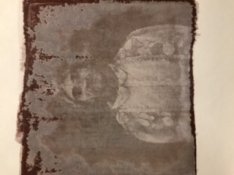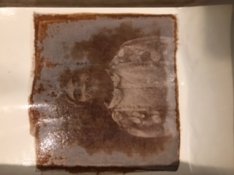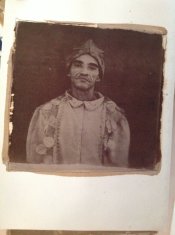It seems that a sensitizer containing 6% citric acid may be too much for this paper. I've reduced the acid strength to 1 drop (12% citric acid) per 1 ml of 12% silver nitrate, and that horrible peeling pattern is gone.
My workflow:
1. a 4% gelatin layer, already mixed with the salt (2% ammonium chloride plus 2% sodium citrate) is applied by brush on the paper side that will be printed on;
2. with the gelatin layer fully dry, sensitizer is applied (a drop of 12% citric acid per ml of 12% silver nitrate);
3. when this is dry, a second layer of sensitizer is applied;
4. with the second layer fully dry, exposure is made under indirect sunlight (open shadow) or UV lamp;
5. development is made in slightly acidified water, 6 to 8 changes of tray content;
6. Gold toning (acetate or borax formula);
7. fixing (5% hypo, 2 bathes, 2 minutes each);
8. hypo clearing (5 minutes);
9. final wash (20 minutes).
The picture shown here was accidentally given a heavy overexposure (about 30 minutes, instead of the intended 12 minutes), and probably for that reason the highlights didn't clear very well. The white spots on the left hand margin are due to careless brushing.


 Folks,
Folks,

 )
)
